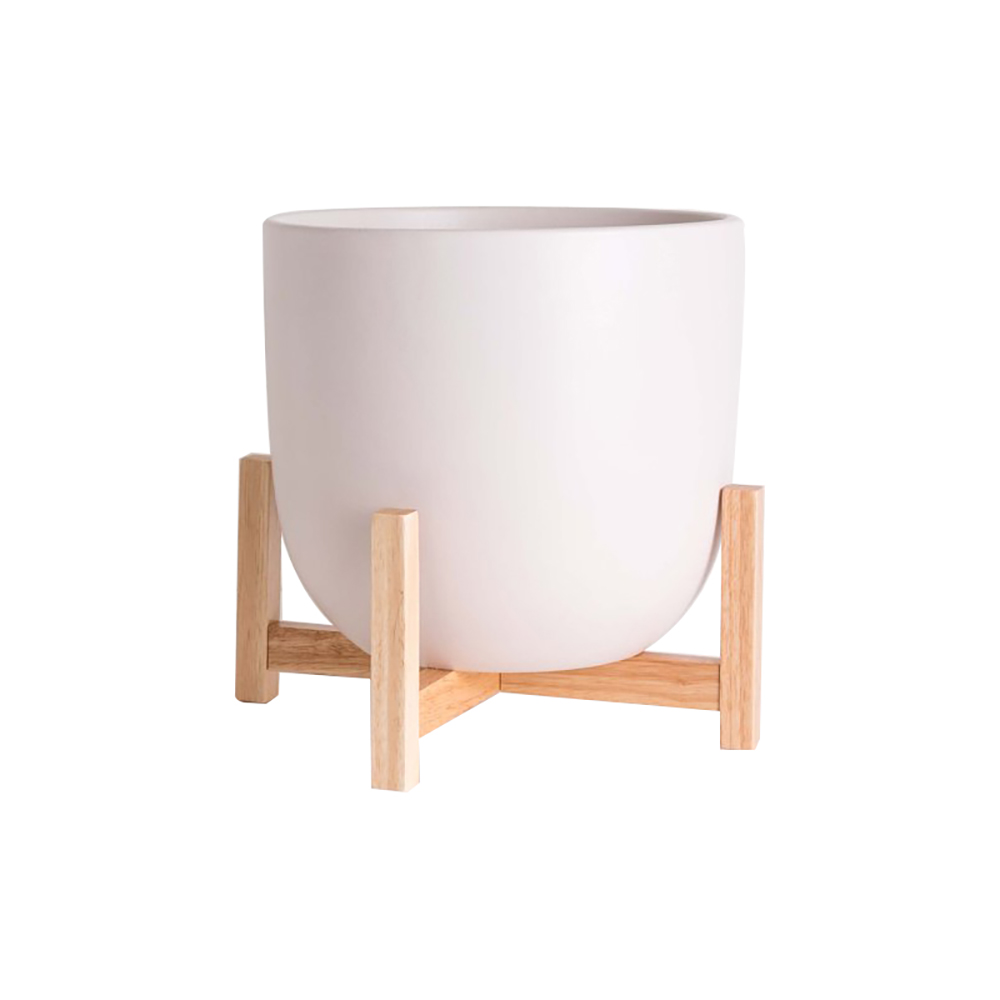What are the disadvantages of a planter?
Time of issue: 2023-08-08 11:10:12Planters have undoubtedly revolutionized the way we engage with gardening and green spaces, providing a versatile and convenient means of cultivating plants in various environments. However, like any other gardening method, planters come with their own set of disadvantages that individuals should consider before incorporating them into their gardening endeavors. In this article, we explore some of the potential drawbacks of using planters.

Limited Root Space:
One of the most significant disadvantages of planters is the limited root space they offer to plants. Unlike plants grown directly in the ground, where their roots can spread freely, planters confine the roots to a restricted area. This limited space can hinder the overall growth and development of the plant, potentially stunting its size and productivity.
Watering Challenges:
Planters can pose challenges when it comes to watering. Depending on the material and design of the planter, water retention and drainage may vary. Some planters, especially those made of porous materials like terracotta, can dry out quickly, requiring frequent watering. On the other hand, planters with poor drainage can lead to waterlogged soil and root rot. Finding the right balance and watering schedule can be a trial-and-error process, and failure to get it right can negatively impact plant health.
Nutrient Depletion:
As plants grow in planters, they rely solely on the nutrients present in the potting mix or soil provided. Over time, these nutrients may become depleted, leading to deficiencies and affecting the plant's vitality. Gardeners must regularly monitor and replenish the soil with fertilizers or compost to maintain the plant's health and ensure optimal growth.
Root Bound Plants:
In some cases, plants can become root bound in planters, especially if they outgrow the available root space. Root binding occurs when the roots of the plant grow in a circular pattern, restricting their ability to spread outward. This condition can weaken the plant and reduce its ability to absorb nutrients and water efficiently.
Temperature Regulation:
Planters, especially those made of certain materials like metal, can be more susceptible to temperature fluctuations. In hot weather, metal planters can heat up rapidly and cause the soil to dry out quickly. Conversely, during colder months, plant roots in metal or ceramic planters may be at risk of frost damage. Proper insulation and protection against extreme temperatures become essential to prevent harm to the plants.
Weight and Mobility:
Larger planters, especially those made of heavy materials like concrete or stone, can be challenging to move or relocate. This lack of mobility can be a disadvantage when rearranging your garden or attempting to shield plants from harsh weather conditions.
Cost:
Depending on the size, material, and design, planters can be relatively expensive compared to traditional gardening methods directly in the ground. The cost can add up significantly, especially when setting up a sizable container garden.
Conclusion:
While planters offer numerous benefits and convenience for gardening enthusiasts, it is crucial to acknowledge the disadvantages they bring. Limited root space, watering challenges, nutrient depletion, and the risk of root binding are some of the factors that gardeners must address and overcome when using planters. With careful consideration, proper maintenance, and appropriate plant care techniques, the drawbacks of planters can be minimized, allowing individuals to enjoy a thriving and beautiful garden in these confined spaces.
RECENT POSTS
- The Benefits of Wholesale High-Quality Ceramic Products for Retailers
2025-12-17
- Can You Make an Ashtray with Air Dry Clay? Pros, Cons, and Safer Alternatives
2025-12-17
- The Impact of Ceramic Materials in Energy-Efficient Buildings: Benefits and Applications
2025-12-04
- Top 7 Ceramic Cookware Health Benefits: Why It’s a Safer Choice for Your Kitchen
2025-12-04
- How to Clean Ceramic Planters and Improve Their Lifespan?
2025-11-17
- 15 Best Ceramic Holiday Gift Ideas for 2025: Thoughtful, Elegant & Heartfelt
2025-11-17
- Stoneware vs Porcelain vs Earthenware: Quick Decision Guide
2025-10-09
- Are Ceramic Glazes Food Safe? The Truth Behind the Shine
2025-10-09










